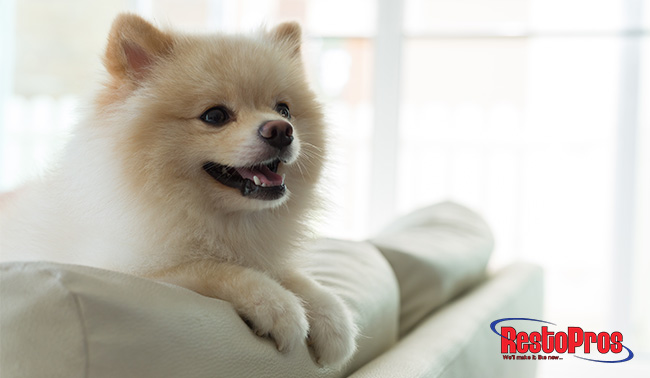When mold infiltrates a home it can be unforgiving. It is especially difficult for those homeowners with pets. Pets are constantly playing in mud and dirt; after playing outside they can track in wet organic material. Sometimes this can lead to a mold outbreak. Damp paws and fur and bacteria-carrying mud can infiltrate carpets, fabric and seep into wood floors. We love our pets, but we shouldn’t be constantly stressed about what they might be bringing into your home.
Pets are meant to be loved, not quarantined. Knowledge of pets and their role in spreading mold is key to a healthier home. It is important to understand the causes, symptoms, and prevention of mold indirectly caused by pet behavior. The professionals at RestoPros can help with keeping your home (and pets) safe from infiltration.
Causes of Pet Mold Contamination
- Pets attract mold commonly from mud, dirt, and soil, especially during rainy and humid days.
- Mud sticking to their feet holds many kinds of contaminants, with some that can lead to mold growth.
- Pets rubbing themselves against moldy trees or plants can become contaminated and bring spores inside the home.
- Chew toys and food bowls are often left with lingering moisture and bacteria, which can cause mold growth.
To stop the contamination of mold from your pets, you must take steps in both care and prevention.
Pet Mold Prevention and Care
- Wash your pets regularly, and immediately clean their paws and feet if covered in mud and dirt.
- Before letting them roam outside, check for any traces of mold in the trees, walls, and plants in your yard.
- Keep all pet items clean and dry, and replace them if necessary (this includes beds, chew toys, bowls, etc.).
- Store food in a dry location, and seal it airtight.
- Mold-infected homes require immediate attention as well, and RestoPros provides affordable mold remediation services to quickly remove any mold.
Your pet can also become very sick from ingesting mold. Certain mold types can produce mycotoxins which exhibit varying symptoms in pets. Persistence of these symptoms could lead to severe health problems, or even death. If your pet has ingested mold, represented in the symptoms below, consult with a vet immediately.
Common Signs Your Pet has Ingested Mold
- Constant itching and scratching, but no signs of fleas
- Severe loss of appetite and thirst
- Vomiting and changes in stool
- Coughing, sneezing, and heavy breathing
- Loss of energy and limpness
- Nasal and eye discharge
- Noticeable skin sores and bumps
Knowledge of mold and its relationship to your pets will help greatly in combating infiltration. Staying on top of their surroundings and being mindful of symptoms in case of ingestion will help keep them safe and healthy. If your home is experiencing a mold outbreak, consult with RestoPros immediately. We strive to give homeowners a safe environment for their loved ones – including their pets. Give us a call at 855-587-3786 to schedule an appointment today!

